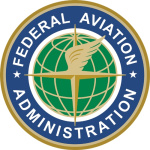- Industry: Government
- Number of terms: 35337
- Number of blossaries: 0
- Company Profile:
The airborne portion of the secondary surveillance radar system. The transponder emits a reply when queried by a radar facility.
Industry:Aviation
Landing gear employing a third wheel located on the nose of the aircraft.
Industry:Aviation
A small auxiliary hinged portion of a movable control surface that can be adjusted during flight to a position resulting in a balance of control forces.
Industry:Aviation
Usually a turbofan engine design where the fan is the N1 compressor, followed by the N2 intermediate compressor, and the N3 high pressure compressor, all of which rotate on separate shafts at different speeds.
Industry:Aviation
The boundary layer between the troposphere and the mesosphere which acts as a lid to confine most of the water vapor, and the associated weather, to the troposphere.
Industry:Aviation
The layer of the atmosphere extending from the surface to a height of 20,000 to 60,000 feet depending on latitude.
Industry:Aviation
Calibrated airspeed corrected for altitude and nonstandard temperature. Because air density decreases with an increase in altitude, an airplane has to be flown faster at higher altitudes to cause the same pressure difference between pitot impact pressure and static pressure. Therefore, for a given calibrated airspeed, true airspeed increases as altitude increases; or for a given true airspeed, calibrated airspeed decreases as altitude increases.
Industry:Aviation
The vertical distance of the airplane above sea level - the actual altitude. It is often expressed as feet above mean sea level (MSL). Airport, terrain, and obstacle elevations on aeronautical charts are true altitudes.
Industry:Aviation
An aircraft with the horizontal stabilizer mounted on the top of the vertical stabilizer, forming a T.
Industry:Aviation
The portion of the turbine assembly that absorbs the energy of the expanding gases and converts it into rotational energy.
Industry:Aviation
